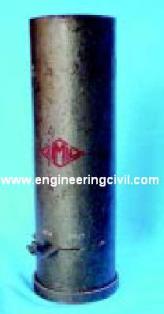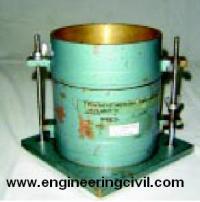This test is done to determine the in-situ dry density of soil by sand replacement method as per IS: 2720 (Part XXVIII) – 1974. The apparatus needed is
i) Sand-pouring cylinder conforming to IS: 2720 (Part XXVIII) -1974
ii) Cylindrical calibrating container conforming to IS: 2720 (Part XXVIII) – 1974
iii) Soil cutting and excavating tools such as a scraper tool, bent spoon
iv) Glass plate – 450mm square and 9mm thick or larger
v) Metal containers to collect excavated soil
vi) Metal tray – 300mm square and 40mm deep with a 100mm hole in the centre
vii) Balance, with an accuracy of 1g

Procedure To Determine The In-Situ Dry Density Of Soil By Sand Replacement Method

